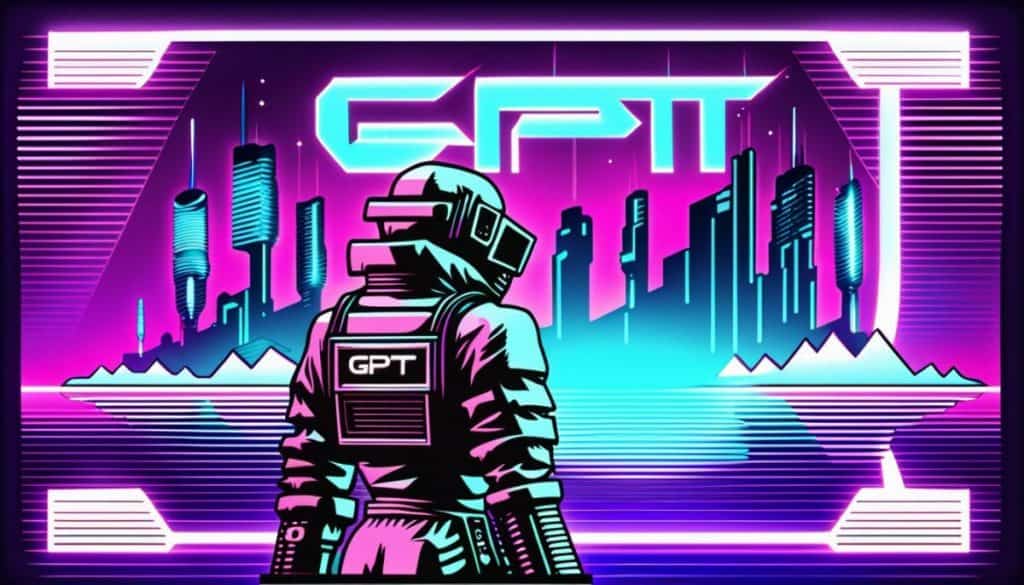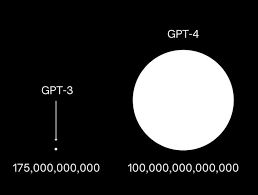GPT-4’s Leaked Details Shed Light on its Massive Scale and Impressive Architecture


In Brief
The leaked information about GPT-4 has sparked excitement among the AI community. With over 10 times the parameters of its predecessor, GPT-3, GPT-4 is estimated to have 1.8 trillion parameters distributed across 120 layers.
OpenAI implemented a mixture of experts (MoE) model, utilizing 16 experts with 111 billion parameters for multi-layer perceptrons (MLP). The model’s efficient inference process utilizes 280 billion parameters and 560 TFLOPs per forward pass, demonstrating OpenAI’s commitment to maximizing efficiency and cost-effectiveness. The model’s training dataset includes 13 trillion tokens, with fine-tuning from 8k to 32k.
OpenAI utilized parallelism in GPT-4 to leverage the full potential of their A100 GPUs, employing 8-way tensor parallelism and 15-way pipeline parallelism. The training process was extensive and resource-intensive, with costs ranging from $32 million to $63 million.
GPT-4’s inference cost is approximately three times higher than its predecessor, but it also incorporates multi-query attention, continuous batching, and speculative decoding. The inference architecture operates on a cluster of 128 GPUs, distributed across multiple data centers.
The recent leak of details surrounding GPT-4 has sent shockwaves through the AI community. The leaked information, obtained from an undisclosed source, provides a glimpse into the awe-inspiring capabilities and unprecedented scale of this groundbreaking model. We will break down the facts and unveil the key aspects that make GPT-4 a true technological marvel.

- GPT-4’s Massive Parameters Count
- Mixture of Experts Model (MoE)
- Simplified MoE Routing Algorithm
- Efficient Inference
- Extensive Training Dataset
- Refinement through Fine-Tuning from 8K to 32K
- Scaling with GPUs via Parallelism
- Training Cost and Utilization Challenges
- Tradeoffs in Mixture of Experts
- Inference Cost
- Multi-Query Attention
- Continuous Batching
- Vision Multi-Modal
- Speculative Decoding
- Inference Architecture
- Dataset Size and Composition
- Rumours and Speculations
- The Reporter’s Opinion
- The Fascination with GPT-4’s Knowledge
- The Versatility of GPT-4
GPT-4’s Massive Parameters Count
One of the most striking revelations from the leak is the sheer magnitude of GPT-4. It boasts an astounding size, with more than 10 times the parameters of its predecessor, GPT-3. It is estimated to have a staggering total of approximately 1.8 trillion parameters distributed across an impressive 120 layers. This substantial increase in scale undoubtedly contributes to GPT-4’s enhanced capabilities and potential for groundbreaking advancements.

Mixture of Experts Model (MoE)
To ensure reasonable costs while maintaining exceptional performance, OpenAI implemented a mixture of experts (MoE) model in GPT-4. By utilizing 16 experts within the model, each consisting of around 111 billion parameters for multi-layer perceptrons (MLP), OpenAI effectively optimized resource allocation. Notably, during each forward pass, only two experts are routed, minimizing computational requirements without compromising results. This innovative approach demonstrates OpenAI’s commitment to maximizing efficiency and cost-effectiveness in their models.
Very interesting and detailed leak of the GPT-4 architecture, with excellent analysis of the reasoning behind it and it's implications – by @dylan522p :https://t.co/eHE7VlGY5V
— Jan P. Harries (@jphme) July 11, 2023
A non-paywalled summary can be found here: https://t.co/rLxw5s9ZDt
Simplified MoE Routing Algorithm
While the model often explores advanced routing algorithms for selecting experts to handle each token, OpenAI’s approach in the current GPT-4 model is reportedly more straightforward. The routing algorithm employed by the AI is alleged to be relatively simple, but nonetheless effective. Approximately 55 billion shared parameters for attention facilitate the efficient distribution of tokens to the appropriate experts within the model.
Efficient Inference
GPT-4’s inference process showcases its efficiency and computational prowess. Each forward pass, dedicated to generating a single token, utilizes approximately 280 billion parameters and 560 TFLOPs (tera floating-point operations per second). This stands in stark contrast to the immense scale of GPT-4, with its 1.8 trillion parameters and 3,700 TFLOPs per forward pass in a purely dense model. The efficient use of resources highlights OpenAI’s dedication to achieving optimal performance without excessive computational requirements.
Extensive Training Dataset
GPT-4 has been trained on a colossal dataset comprising approximately 13 trillion tokens. It is important to note that these tokens include both unique tokens and tokens accounting for epoch numbers. The training process includes two epochs for text-based data and four epochs for code-based data. OpenAI leveraged millions of rows of instruction fine-tuning data sourced from ScaleAI and internally to refine the model’s performance.
Refinement through Fine-Tuning from 8K to 32K
The pre-training phase of GPT-4 employed an 8k context length. Subsequently, the model underwent fine-tuning, resulting in the 32k version. This progression builds upon the pre-training phase, enhancing the model’s capabilities and tailoring it to specific tasks.
Scaling with GPUs via Parallelism
OpenAI harnessed the power of parallelism in GPT-4 to leverage the full potential of their A100 GPUs. They employed 8-way tensor parallelism, which maximizes parallel processing, as it is the limit for NVLink. Additionally, 15-way pipeline parallelism was utilized to further enhance performance. While specific techniques such as ZeRo Stage 1 were likely employed, the exact methodology remains undisclosed.
Training Cost and Utilization Challenges
Training GPT-4 was an extensive and resource-intensive endeavor. OpenAI allocated approximately 25,000 A100 GPUs over a period of 90 to 100 days, operating at a utilization rate of approximately 32% to 36% MFU (most frequently used). The training process incurred numerous failures, necessitating frequent restarts from checkpoints. If estimated at $1 per A100 hour, the training costs for this run alone would amount to approximately $63 million.
Tradeoffs in Mixture of Experts
Implementing a mixture of experts model presents several tradeoffs. In the case of GPT-4, OpenAI opted for 16 experts instead of a higher number. This decision reflects a balance between achieving superior loss results and ensuring generalizability across various tasks. More experts can present challenges in terms of task generalization and convergence. OpenAI’s choice to exercise caution in expert selection aligns with their commitment to reliable and robust performance.
Inference Cost
Compared to its predecessor, the 175 billion parameter Davinci model, GPT-4’s inference cost is approximately three times higher. This discrepancy can be attributed to several factors, including the larger clusters required to support GPT-4 and the lower utilization achieved during inference. Estimations indicate an approximate cost of $0.0049 cents per 1,000 tokens for 128 A100 GPUs, and $0.0021 cents per 1,000 tokens for 128 H100 GPUs when inferring GPT-4 with an 8k. These figures assume decent utilization and high batch sizes, crucial considerations for cost optimization.
Multi-Query Attention
OpenAI leverages multi-query attention (MQA), a technique widely employed in the field, in GPT-4 as well. By implementing MQA, the model requires only one head, significantly reducing the memory capacity necessary for the key-value cache (KV cache). Despite this optimization, it should be noted that the 32k batch GPT-4 cannot be accommodated on 40GB A100 GPUs, and the 8k is constrained by the maximum batch size.
Continuous Batching
To strike a balance between latency and inference costs, OpenAI incorporates both variable batch sizes and continuous batching in GPT-4. This adaptive approach allows for flexible and efficient processing, optimizing resource utilization and reducing computational overhead.
Vision Multi-Modal
GPT-4 introduces a separate vision encoder alongside the text encoder, featuring cross-attention between the two. This architecture, reminiscent of Flamingo, adds additional parameters to the already impressive 1.8 trillion parameter count of GPT-4. The vision model undergoes separate fine-tuning using approximately 2 trillion tokens following the text-only pre-training phase. This vision capability empowers autonomous agents to read web pages, transcribe images, and interpret video content—an invaluable asset in the age of multimedia data.
Speculative Decoding
An interesting aspect of GPT-4’s inference strategy is the possible use of speculative decoding. This approach involves employing a smaller, faster model to generate predictions for multiple tokens in advance. These predicted tokens are then fed into a larger “oracle” model as a single batch. If the smaller model’s predictions align with the larger model’s agreement, several tokens can be decoded together. However, if the larger model rejects the tokens predicted by the draft model, the rest of the batch is discarded, and inference continues solely with the larger model. This approach allows for efficient decoding while potentially accepting lower probability sequences. It is worth noting that this speculation remains unverified at this time.
Inference Architecture
GPT-4’s inference process operates on a cluster of 128 GPUs, distributed across multiple data centers in different locations. This infrastructure employs 8-way tensor parallelism and 16-way pipeline parallelism to maximize computational efficiency. Each node, comprising 8 GPUs, accommodates approximately 130 billion parameters. With a model size of 120 layers, GPT-4 can fit within 15 different nodes, possibly with fewer layers in the first node due to the need to compute embeddings. These architectural choices facilitate high-performance inference, demonstrating OpenAI’s commitment to pushing the boundaries of computational efficiency.
Dataset Size and Composition
GPT-4 was trained on an impressive 13 trillion tokens, providing it with an extensive corpus of text to learn from. However, not all tokens can be accounted for by the known datasets used during training. While datasets like CommonCrawl and RefinedWeb contribute a significant portion of the training data, there remains a portion of tokens that are unaccounted for, often referred to as the “secret” data.
Rumours and Speculations
Speculations have emerged regarding the origin of this undisclosed data. One rumor suggests that it includes content from popular platforms such as Twitter, Reddit, and YouTube, highlighting the potential influence of user-generated content in shaping GPT-4’s knowledge base. Additionally, there are conjectures surrounding the inclusion of expansive collections like LibGen, a repository of millions of books, and Sci-Hub, a platform providing access to numerous scientific papers. The notion that GPT-4 was trained on the entirety of GitHub has also circulated among AI enthusiasts.
The Reporter’s Opinion
Although there are many rumors, it is important to approach these rumors with caution. The training of GPT-4 may have benefited greatly from a special dataset made up of college textbooks. This dataset, which covers a wide range of courses and subjects, could have been painstakingly assembled by hand. College textbooks provide a structured and comprehensive knowledge base that can be successfully used to train a language model and are easily convertible to text files. The inclusion of such a dataset might give the impression that GPT-4 is knowledgeable in a variety of fields.
The Fascination with GPT-4’s Knowledge
One intriguing aspect of GPT-4’s training is its ability to exhibit familiarity with specific books and even recall unique identifiers from platforms like Project Euler. Researchers have attempted to extract memorized sections of books from GPT-4 to gain insights into its training, further fueling curiosity about the model’s inner workings. These discoveries highlight the astonishing capacity of GPT-4 to retain information and underscore the impressive capabilities of large-scale language models.
The Versatility of GPT-4
The broad spectrum of topics and fields that GPT-4 can seemingly engage with showcases its versatility. Whether it be answering complex questions in computer science or delving into philosophical debates, GPT-4’s training on a diverse dataset equips it to engage with users from various domains. This versatility stems from its exposure to a vast array of textual resources, making it a valuable tool for a wide range of users.
Read more about AI:
Disclaimer
In line with the Trust Project guidelines, please note that the information provided on this page is not intended to be and should not be interpreted as legal, tax, investment, financial, or any other form of advice. It is important to only invest what you can afford to lose and to seek independent financial advice if you have any doubts. For further information, we suggest referring to the terms and conditions as well as the help and support pages provided by the issuer or advertiser. MetaversePost is committed to accurate, unbiased reporting, but market conditions are subject to change without notice.
About The Author
Damir is the team leader, product manager, and editor at Metaverse Post, covering topics such as AI/ML, AGI, LLMs, Metaverse, and Web3-related fields. His articles attract a massive audience of over a million users every month. He appears to be an expert with 10 years of experience in SEO and digital marketing. Damir has been mentioned in Mashable, Wired, Cointelegraph, The New Yorker, Inside.com, Entrepreneur, BeInCrypto, and other publications. He travels between the UAE, Turkey, Russia, and the CIS as a digital nomad. Damir earned a bachelor's degree in physics, which he believes has given him the critical thinking skills needed to be successful in the ever-changing landscape of the internet.
More articles

Damir is the team leader, product manager, and editor at Metaverse Post, covering topics such as AI/ML, AGI, LLMs, Metaverse, and Web3-related fields. His articles attract a massive audience of over a million users every month. He appears to be an expert with 10 years of experience in SEO and digital marketing. Damir has been mentioned in Mashable, Wired, Cointelegraph, The New Yorker, Inside.com, Entrepreneur, BeInCrypto, and other publications. He travels between the UAE, Turkey, Russia, and the CIS as a digital nomad. Damir earned a bachelor's degree in physics, which he believes has given him the critical thinking skills needed to be successful in the ever-changing landscape of the internet.


















































